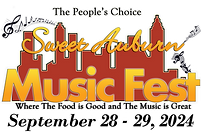
Butler St. YMCA
The Black City Hall of Atlanta
20-24 Butler Street (now Jesse Hill Street)
Sweet Auburn Historic District, Atlanta, Georgia
Founded: 1894
Built: 1920
Architect: Hentz, Reid and Adler
Builder: Alexander Hamilton
Architectural Style: Although the façade has been slightly altered, the building still retains many elements of the elegant Georgian Revival style.
Original Use: This building became a center of social life on the Avenue by providing recreation and supervised activity space for younger blacks and a meeting place for older blacks. Many of Atlanta's young black men belonged to the Y and used it as a recreation center. Vernon Jordon and Martin Luther King, Jr. are leaders influenced as youths by their membership here.The building contains over 10,000 square feet and houses 48 dormatory rooms, 7 class rooms, a small auditorium, a gymnasium, a swimming pool, shower baths, a café and restrooms. It is the only minority YMCA in America that has been allowed to operate independently without being a branch.
Readaptive Use: Continues functioning as a YMCA.
Significant dates:
1894 - JS Brandon begins plans to organize a Young Mens Christain Association. A group of young people meet in
the basement of the Wheat Street Baptist Church to formalize the group. Brandon is elected president and
his sister-in-law, Hattie Askidge, is elected organist. The dominant activity during the early years was song
and prayer on Sunday afternoons.
1909 - W.J. Trent is elected president of the YMCA and begins a campaign drive to raise money to erect a
headquarters.
1918 - The YMCA property on Auburn Avenue is sold for $7,200.00 and property is purchased on Butler Street for
$10,609.00. Built by Alexander D. Hamilton, the new structure cost $115,000 and contained over 10,000 square
feet.
1920 - May. Major Robert Russa Moton, principal of Tuskegee Institute, dedicates the Butler Street YMCA.
1922 - The Phillis Wheatly YWCA launches its first membership drive with a goal of 2,000.00.
1942 - The YMCA initiates The Hungry Club Forum, which began as a secret organization and then became openly
recognized and extremely effective forum between black and white leaders. The club's motto is: "Food for
taste and food for thought for those who hunger for information and association ". Hungry Club luncheons are
held at the Y.
1946 - Formation of the Atlanta Negro Voters League (ANVL) by Attorney A.T. Walden (Democrat) and John Wesley
Dobbs (Republican). The Butler Street YMCA was their regular meeting facility.
1946 - All Citizens Registration Committee is formed to register and unite all the African American votes. They met
regularly at the Butler Street YMCA.
1990's - Addition is built across the street.
From "Will The Circle Be Unbroken?"
NARRATOR: The Auburn Avenue district also contained another important black community institution, the Butler Street YMCA.
W. L. CALLOWAY: It had, I would say, the largest assembly for organizations to meet except in a church, and more organizations were founded in the Butler Street YMCA than in anywhere else.
NARRATOR: Jesse Hill (President of Atlanta Life Insurance Company and community leader)...
JESSE HILL: In fact the Butler Street "Y" was the black city hall of Atlanta. That's where the first Police precinct was. The Atlanta Negro Voters League was there and there was an organization called the All Citizen Registration Committee with C. A. Bacote.







